British Army
| British Army | |
|---|---|
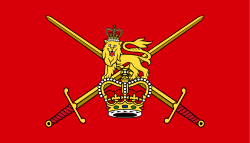 | |
| Active | 1661 - present |
| Country | United Kingdom |
| Allegiance | Queen Elizabeth II |
| Type | Army |
| Size | 146,000 (2009) |
| Part of | Ministry of Defence |
| Motto(s) | Be the Best (recruiting) |
| Commanders | |
| Chief of the General Staff | Gen. Sir David Richards KCB CBE DSO |
The British Army is the land armed forces branch of the British Armed Forces. It came into being with the unification of the Kingdoms of England and Scotland into the Kingdom of Great Britain in 1707. The new British Army incorporated Regiments that had already existed in England and Scotland and was administered by the War Office from London. Since 1963, it has been managed by the Ministry of Defence.
The British Army consists of 112,100 regular soldiers (with a trained strength of 100,200 and a trained requirement of 102,200), which includes 3,600 Gurkhas, plus 34,000 Territorial Army soldiers, giving it a total of around 146,000 soldiers in June 2009.[1] The full-time element of the British Army has also been referred to as the Regular Army since the creation of the reservist Territorial Army in 1908. The British Army is deployed in many of the world's war zones as part of both Expeditionary Forces and in United Nations Peacekeeping forces. The British Army is currently deployed in Kosovo, Cyprus, Germany, Afghanistan and many other places.
In contrast to the Royal Navy, Royal Marines and Royal Air Force, the British Army does not include Royal in its title. This is because historically, British Armies were comprised of individually raised regiments and corps. Nevertheless, many of its constituent Regiments and Corps have been granted the Royal prefix and have members of the Royal Family occupying senior positions within some regiments.
The professional head of the British Army is the Chief of the General Staff, currently Sir David Richards KCB CBE DSO.
History

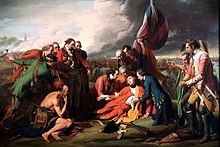

The British Army came into being with the merger of the Scottish Army and the English Army, following the unification of the two countries' parliaments and the creation of the United Kingdom of Great Britain in 1707. The new British Army incorporated existing English and Scottish regiments, and was controlled from London.
From roughly 1763 the United Kingdom has been one of the leading military and economic powers of the world. The British Empire expanded in this time to include colonies, protectorates, and Dominions throughout the Americas, Africa, Asia and Australasia. Although the Royal Navy is widely regarded as having been vital for the rise of the British Empire, and British dominance of the world, the British Army played important roles in colonisation. Typical tasks for the Army included garrisoning the colonies, capturing strategically important territories and participating in actions to pacify colonial borders, provide support to allied governments, suppress Britain's rivals, and protect against foreign powers and hostile natives.
British troops also helped capture strategically important territories for the British, allowing the British Empire to expand throughout the globe. The Army also involved itself in numerous wars meant to pacify the borders, or to prop-up friendly governments, and thereby keep other, competitive, empires away from the British Empire's borders. Among these actions were the Seven Years' War, the American Revolutionary War, the Napoleonic Wars, the First and Second Opium Wars, the Boxer Rebellion, the New Zealand land wars, the Indian Rebellion of 1857, the First and Second Boer Wars, the Fenian raids, the Irish War of Independence, its serial interventions into Afghanistan (which were meant to maintain a friendly buffer state between British India and the Russian Empire), and the Crimean War (to keep the Russian Empire at a safe distance by coming to Turkey's aid).
As had its predecessor, the English Army, the British Army fought Spain, France, and the Netherlands for supremacy in North America and the West Indies. With native and provincial assistance, the Army conquered New France in the Seven Years' War and subsequently suppressed a Native American uprising in Pontiac's War. The British Army suffered defeat in the American War of Independence, losing the Thirteen Colonies but holding on to Canada.
The British army was heavily involved in the Napoleonic Wars in which the army served in Spain, across Europe, and in North Africa. The war between the British and First French Empires stretched around the world. The British Army finally came to defeat Napoleon at one of Britain's greatest military victories at the battle of Waterloo.

Under Oliver Cromwell, the English Army had been active in the conquest, and the settlement, of Ireland since the 1650s. The Cromwellian campaign was characterised by its uncompromising treatment of the Irish towns (most notably Drogheda) that had supported the Royalists during the English Civil War. It (and subsequently, the British Army) have been almost continuously involved in Ireland ever since, primarily in suppressing numerous Irish revolts and campaigns for self-determination. It was faced with the prospect of battling Anglo-Irish and Ulster Scots settlers in Ireland, who alongside their Irish countrymen had raised their own volunteer army and threatened to emulate the American colonists if their conditions (primarily concerning home rule and freedom of trade) were not met. The British Army found itself fighting Irish rebels, both Protestant and Catholic, primarily in Ulster and Leinster (Wolfe Tone's United Irishmen) in the 1798 rebellion.
In addition to battling the armies of other European Empires' (and of its former colonies, the United States, in the American War of 1812,) in the battle for global supremacy, the British Army fought the Chinese in the First and Second Opium Wars, and the Boxer Rebellion; Māori tribes in the first of the New Zealand Wars; Indian princely forces and British East India Company mutineers in the Indian Mutiny; the Boers in the First and Second Boer Wars; Irish Fenians in Canada during the Fenian raids; and Irish separatists in the Anglo-Irish War.
Following William and Mary's accession to the throne, England involved itself in the War of the Grand Alliance primarily to prevent a French invasion restoring Mary's father, James II. Following the 1707 union of England and Scotland, and then the 1801 creation of the United Kingdom of Great Britain and Ireland, British foreign policy, on the continent, was to contain expansion by its competitor powers such as France and Spain. The territorial ambitions of the French led to the War of the Spanish Succession and the Napoleonic Wars. Russian activity led to the Crimean War.
The vastly increasing demands of imperial expansion, and the inadequacies and inefficiencies of the underfunded, post-Napoleonic Wars British Army, and of the Militia, Yeomanry, and Volunteer Force, led to the Cardwell and Childers Reforms of the late 19th century, which gave the British Army its modern shape, and redefined its regimental system. The Haldane Reforms of 1907, formally created the Territorial Force as the Army's volunteer reserve component.


Great Britain's dominance of the world had been challenged by numerous other powers, notably the German Empire. The UK was allied with France (by the Entente Cordiale) and Russia, and when the First World War broke out in 1914, the British Army sent the British Expeditionary Force to France and Belgium to prevent Germany from occupying these countries. The War would be the most devastating in British military history, with near 800,000 men killed and over 2 million wounded. In the early part of the war, the professional force of the BEF was decimated and, by turns, a volunteer (and then conscripted) force replaced it. Major battles included the Battle of the Somme. Advances in technology saw advent of the tank, with the creation of the Royal Tank Regiment, and advances in aircraft design, with the creation of the Royal Flying Corps, which were to be decisive in future battles. Trench warfare dominated strategy on the Western Front, and the use of chemical and poison gases added to the devastation.
In 1939, the Second World War broke out with the German invasion of Poland. British assurances to the Polish led the British Empire to declare war on Germany. Again an Expeditionary Force was sent to France, only to be hastily evacuated as the German forces swept through the Low Countries and across France in 1940. Only the Dunkirk evacuations saved the entire Expeditionary Force from capture. Later, however, the British would have spectacular success defeating the Italians and Germans at the Battle of El Alamein in North Africa, and in the D-Day invasions of Normandy with the help of American, Canadian, Australian and New Zealand forces. Contrary to popular (Hollywood influenced) belief, over half of Allied soldiers on D-day were British. In the Far East, the British Army battled the Japanese in Burma. World War II saw the British army develop its Commando units including the Parachute Regiment and Special Air Service. During the war the British army was one of the major fighting forces on the side of the allies.
After the end of World War II, the British Army was significantly reduced in size, although National Service continued until 1960. This period also saw the process of Decolonisation commence with the end of the British Raj, and the independence of other colonies in Africa and Asia. Accordingly the strength of the British military was further reduced, in recognition of Britain's reduced role in world affairs, outlined in the 1957 Defence White Paper, although major conflicts had been recently fought in form of the Korean War in 1950 and Suez Crisis in 1956. A large deployment of British troops also remained in Germany, facing the threat of Soviet invasion. The Cold War saw significant technological advances in warfare, and the Army saw more technologically advanced weapons systems come into service.

Despite the decline of the British Empire, the Army was still deployed around the world, fighting colonial wars in Aden, Cyprus, Kenya and Malaya. In 1982 the British Army, alongside the Royal Marines, helped to recapture the Falkland Islands during the Falklands War against Argentina.
In the three decades following 1969, the Army was heavily deployed in Northern Ireland, to support the Royal Ulster Constabulary (later the Police Service of Northern Ireland) in their conflict with loyalist and republican paramilitary groups, called Operation Banner. The locally-recruited Ulster Defence Regiment was formed, later becoming the Royal Irish Regiment in 1992. Over 700 soldiers were killed during the Troubles. Following the IRA ceasefires between 1994 and 1996 and since 1997, demilitarisation has taken place as part of the peace process, reducing the military presence from 30,000 to 5,000 troops. On 25 June 2007, the Second Battalion Princess of Wales's Royal Regiment vacated the Army complex at Bessbrook Mill in Armagh. This is part of the 'normalisation' programme in Northern Ireland in response to the IRA's declared end to its activities.
- see also: Tank formations during the Cold War
Recent and current conflicts
Gulf War
The ending of the Cold War saw a 40% cut in manpower, as outlined in the Options for Change review. Despite this, the Army has been deployed in an increasingly global role. In 1991, the United Kingdom was the second largest contributor to the coalition force that fought Iraq in the Gulf War. The nation supplied just under 50,000 personnel and was the nation put in control of Kuwait after it was liberated.
Balkans conflicts
The British Army was deployed to Yugoslavia in 1992. Initially this force formed part of the United Nations Protection Force. In 1995 command was transferred to IFOR and then to SFOR. Currently troops are under the command of EUFOR. Over 10,000 troops were sent. In 1999 British forces under the command of SFOR were sent to Kosovo during the conflict there. Command was subsequently transferred to KFOR.
Afghanistan
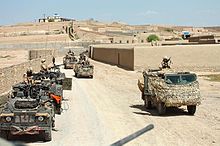
In 2001 the United Kingdom, as a part of Operation Enduring Freedom with the United States, invaded Afghanistan to topple the Taliban. The 3rd Division Signal Regiment were deployed in Kabul, Afghanistan to assist in the liberation of the troubled capital. The Royal Marines' 3 Commando Brigade (part of the Royal Navy but including a number of Army units) also swept the Afghan mountains. The British Army is today concentrating on fighting Taliban forces and bringing security to Helmand province under NATO control. Approximately 8,100 British troops are currently in Afghanistan, making it the second largest force after the US. Up to 2,000 extra British troops are likely to be sent to Afghanistan in 2009, bringing the total to 10,100.
Iraq War
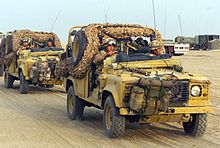
In 2003, the United Kingdom was a major contributor to the United States-led invasion of Iraq. There was major disagreement amongst the populace but the House of Commons voted for the conflict, sending 46,000 army personnel to the region, the second largest force after the US. The British Army controlled the southern regions of Iraq and maintained a peace keeping presence in the city of Basra until their withdrawal on April 30, 2009.
Northern Ireland
The British Army was initially deployed in Northern Ireland in the wake of Catholic rioting in Derry[2] and Belfast[3] and to prevent Protestant Loyalist attacks on Catholic communities, under Operation Banner between 1969 and 2007 in support of the Royal Ulster Constabulary (RUC) and its successor, the Police Service of Northern Ireland (PSNI).[4] There has been a steady reduction in the number of troops deployed in Northern Ireland since the Good Friday Agreement was signed in 1998. In 2005, after the Provisional Irish Republican Army announced an end to armed conflict in Northern Ireland, the British army dismantled posts and withdrew many troops and restored troop levels to that of a peace time garrison. Operation Banner ended at midnight on 31 July 2007, making it the longest continuous deployment in the British Army's history, lasting some thirty-eight years.[5] An internal British Army document released in 2007 stated an expert opinion that the British Army had failed to defeat the IRA but had made it impossible for them to win through the use of violence. Operation Helvetic replaced Operation Banner in 2007 maintaining fewer servicemen in a much more benign environment.[5][6]
Tommy Atkins and other nicknames
A long established nickname for a British soldier has been Tommy Atkins or Tommy for short. The origins are obscure but most probably derive from a specimen army form circulated by the Adjutant-General Sir Harry Calvert to all units in 1815 where the blanks had been filled in with the particulars of a Private Thomas Atkins, No 6 Company, 23rd Regiment of Foot. Present day British soldiers are often referred to as Toms or just Tom. Outside the services soldiers are generally known as squaddies by the British popular press. The British Army magazine Soldier has a regular cartoon strip, Tom, featuring the everyday life of a British soldier.
Another nickname which applies only to soldiers in Scottish regiments is Jocks, derived from the fact that in Scotland the common Christian name John is often changed to Jock in the vernacular. Welsh soldiers are occasionally referred to as Taffy or just Taff. This most likely only applies to those from the Taff-ely Vally in South Wales, where a large portion of men, left unemployed from the decline of the coal industry in the area, enlisted in the military during WW1 and 2. Of course it might also be a vernacular form of Dave or Davey, the patron Saint of Wales being Saint David. Irish soldiers are referred to as Paddys or Micks, this from the days when many Irish recruits had the name Patrick or Michael.
Junior officers in the army are generally known as Ruperts by the Other ranks. This nickname is believed to be derived from the children's comic book character Rupert Bear who epitomizes traditional public school values.[7]
The term Pongo, as in "where the army goes, the pong goes", or Perce is often used by Sailors and Royal Marines to refer to soldiers. It is not considered complimentary.
Today's Army
Statistics

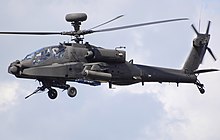
| British Army statistics[8] | |
| Personnel (Regular Army) | 112,000 |
| Personnel (Territorial Army) | 34,000 |
| Main Battle Tanks | 446 Challenger 2 |
| Light Tanks | 325 FV107 Scimitar |
| Infantry fighting vehicles | 789 Warrior. 305 Tempest MPV |
| APCs and CVR(T)s | 3,230–4,000+ |
| Land Rover Wolf | 15,000 |
| Pinzgauer | 2,000 |
| Utility Trucks | 2,300 |
| Artillery pieces and mortar | 2,896 |
| Air Defence | 337 |
| Aircraft | 300+ |
Current deployments
High intensity operations
| Country | Dates | Deployment | Details |
|---|---|---|---|
| Afghanistan | 2001– | 9,000 troops | British troops have been based in Afghanistan since the US-led invasion there in 2001. Currently, under Operation Herrick, the Army maintains troops in Camp Souter, Kabul and a brigade on 6-monthly rotation in the southern province of Helmand mostly based on Camp Bastion and forward operating bases. In late 2008, the resident brigade is 3 Commando Brigade. This brigade has previously done tours in Afghanistan. In June 2008, British Defence Secretary Des Browne announced British troop numbers in Afghanistan to increase by 230 to a new high of more than 8,000 by Spring 2009.[9] |
Low intensity operations
| Country | Dates | Deployment | Details |
|---|---|---|---|
| Cyprus | 1960– | Two resident infantry battalions, Royal Engineers, 16 Flight Army Air Corps and Joint Service Signals Unit at Ayios Nikolaos as a part of British Forces Cyprus | The UK retains two Sovereign Base Areas in Cyprus after the island's independence. The bases serve as forward bases for deployments in the Middle East. British forces are also deployed separately with UN peacekeeping forces on the island. Principal facilities are Alexander Barracks at Dhekelia and Salamanca Barracks at Episkopi. |
| Falkland Islands | 1982– | An infantry company group and an Engineers Squadron | Previously a platoon-sized Royal Marines Naval Party served as garrison. After 1982 the garrison was enlarged, and bolstered with an RAF base at RAF Mount Pleasant on East Falkland. |
| Gibraltar | 1704–1991 | One infantry battalion, Joint Provost and Security Unit as a part of British Forces Gibraltar | British Army garrison is provided by an indigenous regiment, the Royal Gibraltar Regiment, which has been on the Army regular establishment since the last British regiment left in 1991. |
| Rest of the Middle East | 1990- | 3,700 troops | Since the Gulf War in 1991, the UK has had a considerable military presence in the Middle East. Besides Iraq, there are also an additional 3,500 troops in Saudi Arabia and Camp Beuhring, Kuwait, as well as regular training Exercises in Oman. |
| Sierra Leone | 1999 | About 1,000 troops | The British Army were deployed to Sierra Leone, a former British colony on Operation Palliser in 1999 to aid the government in quelling violent uprisings by militiamen, under United Nations resolutions. Troops (Royal Marines) remain in the region to provide military support and training to the Sierra Leone government. |
Permanent overseas postings
| Country | Dates | Deployment | Details |
|---|---|---|---|
| Belize | 1981– | British Army Training and Support Unit Belize and 25 Flight Army Air Corps | British troops have been based in Belize since the country gained independence from the UK in 1981. Until 1994 Belize's neighbour, Guatemala claimed the territory and there were numerous border disputes. At the request of the Belizean government, British troops remained in Belize after independence in 1981 to provide a defence force. |
| Brunei | 1962– | One battalion from the Royal Gurkha Rifles, British Garrison, Training Team Brunei (TTB) and 7 Flight Army Air Corps | A Gurkha battalion has been maintained in Brunei since the Brunei Revolt in 1962 at the request of Sultan Omar Ali Saifuddin III. The Training Team Brunei (TTB) is the Army's jungle warfare school, while the small number of garrison troops support the battalion. 7 Flight Army Air Corps provides helicopter support to both the Gurkha battalion and the TTB. |
| Canada | 1972– | British Army Training Unit Suffield and 29 (BATUS) Flight Army Air Corps | A training centre in the Alberta prairie which is provided for the use of British Army and Canadian Forces under agreement with the government of Canada. British forces conduct regular, major armoured training exercises here every year, with helicopter support provided by 29 (BATUS) Flight AAC. |
| Germany | 1945– | 1st (UK) Armoured Division as part of British Forces Germany and 12 Flight Army Air Corps | British forces remained in Germany after the end of World War II. Forces declined considerably after the end of the Cold War, although the lack of accommodation in the UK means forces will continue to be based in Germany. |
| Kenya | British Army Training Unit Kenya | The Army has a training centre in Kenya, under agreement with the Kenyan government. It provides training facilities for three infantry battalions per year |
Equipment



The basic infantry weapons of the British Army are the SA80 assault rifle family, with several variants such as the L86A2 LSW and the short stock variant, issued to tank crews. There is no sidearm given standard infantry soldiers. However officers and snipers are issued with a sidearm which is generally the Browning L9A1 or Sig Sauer P226 or Colt 1911, though a search is currently underway to find a replacement. Support fire is provided by the FN Minimi light machine gun and the L7 GPMG; indirect fire by 51 and 81 mm mortars, as well as the UGL, mounted under the barrel of the SA80 rifle. Sniper rifles used include the L96A1 7.62 mm, the L115A1 and the AW50F, all produced by Accuracy International. In addition, some units use the L82A1 .50 calibre Barrett sniper rifle.
The British Army's Armoured vehicles include Supacat "Jackal" MWMIK and the Iveco "Panther" CLV The Challenger 2 as its main battle tank. The Warrior Infantry Fighting Vehicle is the primary armoured personnel carrier, although many variants of the Combat Vehicle Reconnaissance (tracked) are used, as well as the Saxon APC and FV430 series now being re-engined and uparmoured and returned to front line service as Bulldog. The British Army commonly uses the Land Rover Wolf and Land Rover Defender.
The Army uses three main artillery systems; the MLRS, AS90 and L118. The MLRS (Multi Launch Rocket System) was first used operationally in Operation Granby and has a range of 70 km. The AS-90 is a 155 mm self-propelled gun. The L118 Light Gun is a 105 mm towed gun used primarily in support of 16 Air Assault Brigade, 19 Light Brigade and 3 Commando Brigade (Royal Marines).
The Rapier FSC Missile System is the Army's primary battlefield air defence system, widely deployed since the Falklands War; and the Starstreak HVM is a surface-to-air missile, launched either by a single soldier or from a vehicle-mounted launcher. The Starstreak fills a similar role to the American FIM-92 Stinger
The Army Air Corps (AAC) provide direct aviation support for the Army, although the RAF also assist in this role. The primary attack helicopter is the Westland WAH-64 Apache; a license-built, modified version of the AH-64 Apache that will replace the Westland Lynx AH7 in the anti-tank role. The Westland Lynx performs several roles including tactical transport, armed escort, reconnaissance and evacuation. It was also used in the anti-armour role; it could carry eight TOW anti-tank missiles. The TOW missile system for the Lynx was withdrawn from service by the MOD in December 2005, after the coming in to service of the WAH-64 Apache.
The Bell 212 is used as a specialist utility and transport helicopter, with a crew of two and a transport capacity of twelve troops.
The Westland Gazelle helicopter is a light helicopter, primarily used for battlefield scouting and control of artillery and aircraft.
The Eurocopter AS 365N Dauphin[10] is used for Special Operations Aviation, along with the Gazelle.
The Britten-Norman Islander is a light aircraft used for airborne reconnaissance and command.
Formation and structure
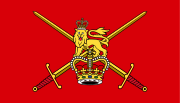 |
| Arms of the British Army |
|---|
| Combat Arms |
| Combat Support Arms |
| Combat Services |
|
|
The structure of the British Army is complex, due to the different origins of its various constituent parts. It is broadly split into the Regular Army (full-time soldiers and units) and the Territorial Army (part-time soldiers and units).
In terms of its military structure, it has two parallel organisations, one administrative and one operational.
Administrative
- Divisions administrating all military units, both Regular and TA, within a geographical area (e.g., 5 Div. based in Shrewsbury).
Operational
The three major commands are Land Command, Headquarters Adjutant General, and Headquarters Northern Ireland.
Corps made up of two or more divisions (now unlikely to be deployed as a purely national formation due to the size of the British Army); e.g., the ARRC.
- Division made up of two or three brigades with an HQ element and support troops. Commanded by a Major-general.
- Brigade made up of between three and five battalions, an HQ element and associated support troops. Commanded by a Brigadier.
- Battalion of about 700 soldiers, made up of five companies commanded by a Lieutenant Colonel, or
- Battlegroup. This is a mixed formation of armour, infantry, artillery, engineers and support units, and its structure is task specific. It is formed around the core of either an armoured regiment or infantry battalion, and has other units added or removed from it as necessary. A battlegroup will typically consist of between 600 and 700 soldiers under the command of a Lieutenant Colonel.
- Company of about 100 soldiers, typically in three platoons, commanded by a Major.
- Platoon of about 30 soldiers, commanded by a Second Lieutenant, Lieutenant or, for specialist platoons such as recce or anti-tank, a Captain.
- Company of about 100 soldiers, typically in three platoons, commanded by a Major.
- Brigade made up of between three and five battalions, an HQ element and associated support troops. Commanded by a Brigadier.
A number of elements of the British Army use alternative terms for battalion, company and platoon. These include the Royal Armoured Corps, Corps of Royal Engineers, Royal Logistics Corps, and the Royal Corps of Signals who use regiment (battalion), squadron (company) and troop (platoon). The Royal Artillery are unique in using the term regiment in place of both corps and battalion, they also replace company with battery and platoon with troop.
Divisions
The British Army currently has 6 divisions with two (1st Armoured Division and 3rd Infantry Division) being deployable.
| Name | Headquarters | Subunits |
|---|---|---|
| File:1ukdiv.gif 1st Armoured Division | Herford, Germany | 3 Armoured units, 1 Logistics unit and a rapid deployment unit from the Czech Republic. |
| Craigiehall, near Edinburgh | Four infantry brigades. | |
| Bulford, Salisbury | Two mechanized brigades, one light brigade, one infantry brigade and a logistics brigade. | |
| File:British 4th Infantry Division Insignia (New).png 4th Infantry Division | Aldershot | Three heavy infantry brigades. |
| File:5div.gif 5th Infantry Division | Shrewsbury | Three heavy infantry brigades, one air assault brigade and Colchester Garrison. |
| York | Deployable divisional HQ. |
Aviation components
The British Army operates alongside the Royal Air Force as part of a Joint Force, but the army also has its own Army Air Corps.
Special forces
The British Army contributes two of the three special forces formations within the United Kingdom Special Forces Command; the Special Air Service Regiment and the Special Reconnaissance Regiment.
The most famous formation is the Special Air Service Regiment. Formed in 1941, the SAS is considered the role model for many other special forces units in the world.[11]
The SAS comprises one regular Regiment and two Territorial Army Regiments and is headquartered at Duke of York Barracks, London.
The regular Regiment, 22 SAS Regiment has its headquarters and depot located in Hereford and consists of five squadrons: A, B, D, G and Reserve and a training wing. The regiment has battlespace roles in deep reconnaissance, target identification and indication and target destruction and denial. In its Counter Terrorism role it is seen as one of the prime anti-terrorist, hostage rescue and target capture units in the world.[citation needed]
The two reserve SAS Regiments; 21 SAS Regiment and 23 SAS Regiment have a more limited role,to provide depth to the UKSF group through the provision of Individual and collective augmentation to the regular component of UKSF and standalone elements up to task group (Regimental) level focused on support and influence (S&I) operations to assist conflict stabilisation.[12]
The Special Reconnaissance Regiment (SRR) which was formed in 2005, from existing assets, undertakes close reconnaissance and special surveillance tasks.[13]
Formed around 1st Battalion the Parachute Regiment, with attached Royal Marines and RAF Regiment assets, the Special Forces Support Group are under the Operational Control of Director Special Forces to provide operational manoeuvre support to the elements of United Kingdom Special Forces.
Recruitment
The Army mainly recruits within the United Kingdom, and normally has a recruitment target of around 25,000 soldiers per year.
Low unemployment in Britain has resulted in the Army having difficulty in meeting its target, and in the early years of the 21st century there has been a marked increase in the number of recruits from other (mostly Commonwealth) countries. In 2008 Commonwealth origin volunteers comprised approximately 6.7% of the Army's total strength. In total 6,600 foreign soldiers from 42 countries were represented in the Army, not including Gurkhas. After Gurkhas, the nation with most citizens in the British Army is Fiji, with 2,185, followed by Jamaica and Ghana with 600 each; many soldiers also come from more prosperous countries such as New Zealand, South Africa and the Republic of Ireland.
The Ministry of Defence is now considering capping the number of recruits from Commonwealth countries, although this will not affect the Gurkhas. If the trend continues 10% of the army will be from Commonwealth countries before 2012. The cap is being debated, as some fear the army's British character is being diluted, and employing too many could make the army seen as employing mercenaries.[14]
The minimum recruitment age is 16 years (after the end of GCSEs), although soldiers may not serve on operations below 18 years; the maximum recruitment age was raised in January 2007 from 26 to 33 years. The normal term of engagement is 22 years, and once enlisted soldiers are not normally permitted to leave until they have served at least 4 years.[15]
There has been a strong and continuing tradition of recruiting from Ireland including what is now the Republic of Ireland. Almost 150,000 Irish soldiers fought in the First World War; 49,000 died. More than 60,000 Irishmen, more than from Northern Ireland, also saw action in the Second World War; like their compatriots in the Great War, all were volunteers. There were more than 400 men serving from the Republic in 2003.[16]
Oath of allegiance

All soldiers must take an oath of allegiance upon joining the Army, a process known as attestation. Those who believe in God use the following words:
I (state your name), swear by Almighty God that I will be faithful and bear true allegiance to Her Majesty Queen Elizabeth II, her heirs and successors and that I will as in duty bound honestly and faithfully defend Her Majesty, her heirs and successors in person, crown and dignity against all enemies and will observe and obey all orders of Her Majesty, her heirs and successors and of the generals and officers set over me.[17][dead link]
Others replace the words "swear by Almighty God" with "solemnly, sincerely and truly declare and affirm".[18]
Training establishments

- Army Training Regiments:
- ATR Bassingbourn
- ATR Winchester
- ATC Pirbright
- Infantry Training Centres:
- ITC Catterick
- Infantry Battle School, Brecon
- Support Weapons School, Warminster
- Army Foundation College (Harrogate)
- Regional training centres
- Welbeck Defence Sixth Form College
Flags and ensigns
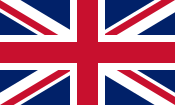

The British Army does not have its own specific ensign, unlike the Royal Navy, which uses the White Ensign, and the RAF, which uses the Royal Air Force Ensign. Instead, the Army has different flags and ensigns, for the entire army and the different regiments and corps. The official flag of the Army as a whole is the Union Flag, flown in ratio 3:5. A non-ceremonial flag also exists, which is used at recruiting events, military events and exhibitions. It also flies from the MOD building in Whitehall.[19]
Whilst at war, the Union Flag is always used, and this flag represents the Army on the Cenotaph in Whitehall, London (the UK's memorial to war dead). A British Army ensign also exists for vessels commanded by a commissioned officer, the Blue Ensign defaced with the Army badge. Army Vessels are operated by the Maritime element of the Royal Logistic Corps.
Each Foot Guards and line regiment (which does not include The Rifles and Royal Gurkha Rifles (RGR)) also has its own flags, known as Colours—normally a Regimental Colour and a Queen's Colour. The design of different Regimental Colours. vary but typically the colour has the Regiment's badge in the centre. The RGR carry the Queen's Truncheon in place of Colours.
Ranks, specialisms and insignia
| NATO code | OF-10 | OF-9 | OF-8 | OF-7 | OF-6 | OF-5 | OF-4 | OF-3 | OF-2 | OF-1 | ||||||||||||||
|---|---|---|---|---|---|---|---|---|---|---|---|---|---|---|---|---|---|---|---|---|---|---|---|---|

|

|

|

|

|

|

|

|

|

|

| ||||||||||||||
| Field marshal | General | Lieutenant-general | Major-general | Brigadier | Colonel | Lieutenant colonel | Major | Captain | Lieutenant | Second lieutenant | ||||||||||||||
| Abbreviation | FM | Gen. | Lt-Gen. | Maj-Gen. | Brig. | Col. | Lt-Col. | Maj. | Capt. | Lt. | 2nd Lt. | |||||||||||||
| ||||||||||||||||||||||||
| NATO code | OR-9 | OR-8 | OR-7 | OR-6 | OR-5 | OR-4 | OR-3 | OR-2 | OR-1 | |||||||||||||||||||||||||||
|---|---|---|---|---|---|---|---|---|---|---|---|---|---|---|---|---|---|---|---|---|---|---|---|---|---|---|---|---|---|---|---|---|---|---|---|---|

|

|

|

|

|

|
No insignia | ||||||||||||||||||||||||||||||
| Warrant officer class 1 | Warrant officer class 2 | Staff/Colour sergeant | Sergeant | Corporal | Lance corporal | Private (or equivalent) | ||||||||||||||||||||||||||||||
Every regiment and corps has its own distinctive insignia, such as cap badge, beret, tactical recognition flash and stable belt.
Throughout the army there are many official specialisms. They do not affect rank, but they do affect pay bands.
| Band 2 Specialisms: | Band 3 Specialisms: |
| Musician | Survey Technician |
| Farrier | Lab Technician |
| Driver Tank Transporter | Registered General Nurse |
| Radar Operator | Telcom Op (Special) |
| Meteorologist | Aircraft Technician |
| Bomb Disposal Engineer | SAS Trooper |
| Telcom Op (Linguist) | Ammunition Technician (Bomb Disposal) |
| Operator Special Intelligence | |
| Construction Materials Technician | |
| Driver Specialist | |
| Armoured Engineer |
Royal Navy and RAF ground units
The other armed services have their own infantry units which are not part of the British Army. The Royal Marines are amphibious light infantry forming part of the Royal Navy, and the Royal Air Force has the RAF Regiment used for airfield defence, force protection duties and Forward Air Control.
Overseas territories military units
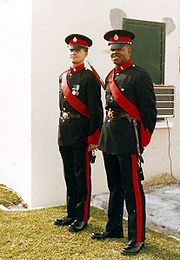
Numerous military units were raised historically in British territories, including self-governing and Crown colonies, and protectorates. Few of these have appeared on the Army List, and their relationship to the British Army has been ambiguous. Whereas Dominions, such as Canada and Australia, raised their own armies, the defence of Crown possessions (like the Channel Islands), and colonies (now called Overseas Territories) was, and is, the responsibility of the UK (due to their status as territories of Britain, not British protectorates). All military forces of overseas territories are, therefore, under the direct command of the UK Government, via the local Governor and Commander-In-Chief.
Many of the units in colonies, or former colonies, were also actually formed at the behest of the UK Government as it sought to reduce the deployment of the British Army on garrison around the world at the latter end of the 19th century. Today, three overseas territories retain locally-raised military units, Bermuda, Gibraltar, and the Falkland Islands. The units are patterned on the British Army, are subject to review by the Ministry of Defence, and are ultimately under the control of the British government, not the local governments of the territories (though day-to-day control may be delegated to Ministers of the territorial governments). Despite this, the units may have no tasking or funding from the MOD, and are generally raised under acts of the territorial assemblies.
See also
- Ministry of Defence
- Redcoat
- Territorial Army (United Kingdom)
- ArmyNET
- Volunteer Army
- British military history
- Royal Navy
- Royal Air Force
- United Kingdom Special Forces
- Modern equipment and uniform of the British Army
- Army Cadet Force (ACF)
- Jankers (army punishments)
Footnotes
- ^ UK Armed Forces: Full Time Strengths and Requirements at 1 June 2009, dasa.mod.uk. Numbers in article to nearest hundred for readability.
- ^ Bloomfield, K Stormont in Crisis (Belfast 1994) p 114
- ^ PRONI: Cabinet conclusions file CAB/4/1460
- ^ McKernan, Michael (2005). Northern Ireland in 1897-2004 Yearbook 2005. Stationery Office. p. 17. ISBN 978-0954628420.
- ^ a b "Operation Banner: An analysis of military operations in Northern Ireland" (PDF). Ministry of Defence. 2006. Retrieved 2008-03-21.
- ^ "Army paper says IRA not defeated". BBC News. 2007-07-06. Retrieved 2008-03-21.
- ^ See "Inside the British Army" by Antony Beevor ISBN 071134658
- ^ Armed forces.co.uk
- ^ http://news.bbc.co.uk/1/hi/world/south_asia/1162108.stm
- ^ Tim Ripley (10 December 2008). "UK Army Air Corps received Dauphins". Janes Defence Weekly, Vol. 45, Issue 50: 10.
- ^ http://www.telegraph.co.uk/news/worldnews/africaandindianocean/kenya/2466432/Kenyan-troops-accused-of-torture-were-trained-by-SAS.html
- ^ "Special Air Service (Reserve) - (SAS(R))". MoD. Retrieved 2008-06-06.
The role of SAS (R) is to provide depth to the UKSF group through the provision of:Individual and collective augmentation to the regular component of UKSF. Standalone elements up to task group (Regimental) level focused on Support and Influence (S&I) operations to assist conflict stabilisation
- ^ http://www.army.mod.uk/specialforces/9677.aspx
- ^ "Commonwealth recruitment caps & current commonwealth troop levels". Guardian Newspaper.
{{cite news}}: Text "date" ignored (help) - ^ "Recruitment Age for Army Raised". BBC News. 2007-01-06. Retrieved 2007-01-12.
- ^ ‘Ian's death brought people together' in the Daily Telegraph 19 March 2003
- ^ "Welcome to the new British Army Website - British Army Website". Army.mod.uk. Retrieved 2008-10-27.
- ^ http://www.army.mod.uk/documents/general/v_s_of_the_british_army.pdf
- ^ britishflags.net- British Army (non-ceremonial)
- ^ a b "Rank structure". army.mod.uk. British Army. Retrieved 27 May 2021.
